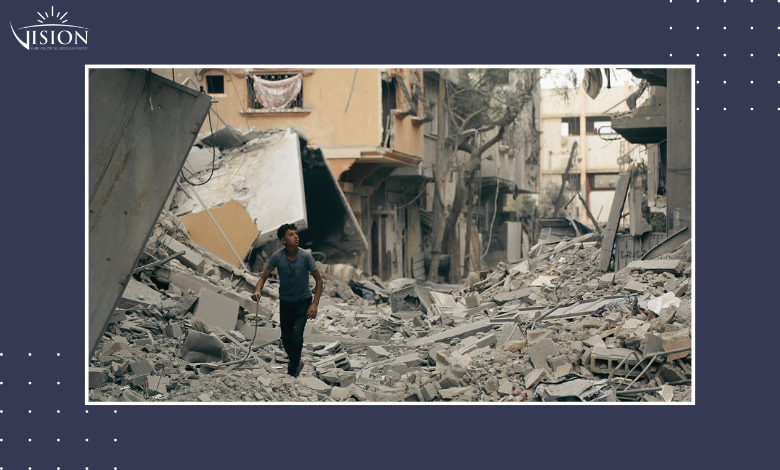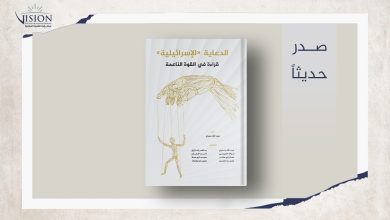Summary of Settler and Occupation Forces Violations: October 2025 Report

The beginning of October witnessed the signing of a ceasefire agreement in Gaza, accompanied by the announcement of a prisoner exchange deal between the Palestinian resistance and the occupation government. Meanwhile, the occupation forces continued their military operations in the northern West Bank, coinciding with a rise in settler attacks against Palestinian farmers during the olive harvest season. These developments were accompanied by a wave of forced displacement policies, land confiscation, and intensified settlement measures.
The following summary reviews the most prominent assaults committed by the occupation forces and settlers against Palestinian citizens and their lands during October 2025. The report draws its information from the United Nations Office for the Coordination of Humanitarian Affairs (OCHA), the Palestinian Authority’s Wall and Settlement Resistance Commission, and the Peace Now organization.
The Genocidal Onslaught on the Gaza Strip
Even after the ceasefire agreement came into effect, the occupation army continues to commit daily violations against civilians in the Gaza Strip. These include ongoing killings, arrests, and military incursions, as well as breaches of the boundaries defined in the agreement. These violations have resulted in the martyrdom of 250 civilians, including dozens of children, women, and the elderly, and the injury of 579 others, more than 99% of whom are civilians. At the same time, dozens of Palestinians remain arbitrarily detained, while the occupation maintains tight security and military restrictions in densely populated areas.
On the humanitarian level, the occupation authorities persist in obstructing the entry of essential aid, fuel, and rescue equipment, allowing only a very limited portion of the agreed quantities. This deepens the health and logistical crisis, hinders the retrieval of bodies from under the rubble, and prevents the evacuation of the wounded for treatment abroad.
The Israeli occupation continues to withhold the bodies of hundreds of Palestinians, some of which have been returned showing clear evidence of serious violations of international humanitarian and human rights law. Forensic and eyewitness documentation by governmental and human rights organizations indicate instances of extrajudicial killings (including summary executions and target killings), torture, and other forms of ill-treatment prior to death. Several of the recovered bodies show marks of hanging, close-range gunshots, bound hands, blindfolds, as well as bodies crushed by tank treads, severe burns, and deep wounds, all indicating extreme acts of brutality, suggesting unlawful use of force and deliberate targeting of detainees and civilians in violation of international legal protections.
Between October 10 and 31, 2025, only 3,203 trucks (approx. 150 trucks per day) were allowed entry into the Gaza Strip carrying commercial and humanitarian aid, although the agreement stipulated the entry of 600 trucks per day, including 50 fuel trucks. This reflects a compliance rate of only about 24%, with fuel deliveries dropping to 10% of the agreed quantities. The severe energy shortage has paralyzed hospitals, bakeries, and vital facilities, preventing the restoration of essential health and service infrastructure.
On the ground, amid two years of ongoing genocide the number of martyrs and missing persons reached approximately 77,000, including tens of thousands of children and women, while more than 9,500 remain under the rubble or unaccounted for. Hundreds of cases of malnutrition and hunger have been recorded, including among infants, due to the use of food, medicine, and water as weapons of war.
In parallel, the occupation systematically targeted medical, humanitarian, and media personnel, resulting in the killing of more than 1,670 medical workers, 140 civil defense members, and 254 journalists. Additionally, 565 humanitarian aid workers were killed, including 376 UN employees, 131 NGO staff, 54 members of the Palestinian Red Crescent, and 4 employees of the International Committee of the Red Cross, a blatant violation of international standards guaranteeing the protection of civilian personnel and the sanctity of humanitarian sites. Meanwhile, more than 6,700 Palestinian detainees remain subjected to torture and ill-treatment in occupation prisons.
The health sector has nearly collapsed, with 38 hospitals completely destroyed or rendered inoperative, 788 health facilities targeted, and dozens of clinics demolished. Ambulances have been disabled, and Israeli forces have also attacked the education sector, destroying 670 schools, 165 universities and educational institutions, and killing 13,500 students, 830 teachers, and 193 scholars and researchers, evidence of a systematic policy targeting Palestinian intellectual and scientific life.
Places of worship have likewise suffered: 835 mosques were completely destroyed, alongside attacks on 3 churches and 40 cemeteries. The occupation continues to hold more than 2,450 bodies, while seven mass graves have been established within medical facilities, an egregious violation of human dignity and international law.
Official estimates indicate that by mid-October 2025, bombing had generated between 65 and 70 million tons of rubble, with around 20,000 unexploded ordnances still threatening civilians and hindering rescue and relief efforts. Nearly 300,000 housing units were completely destroyed and 200,000 partially damaged, displacing around two million Palestinians who now live in deteriorating tents under inhumane conditions marked by disease, poverty, and food insecurity.
Key Statistics on Israeli Violations in the West Bank and Jerusalem
Israeli forces continue to carry out large-scale raids across the northern West Bank, particularly in Jenin Governorate, which has recorded the martyrdom of 65 Palestinians since the beginning of 2025, approximately one-third of all Palestinian deaths in the West Bank during this period, totalling 198 Palestinians. UN reports indicate that these operations persist through patrols, inspections, and daily incursions into residential and commercial buildings, as part of the ongoing military campaign launched by Israeli forces at the start of the year.
The occupation’s assaults in the West Bank and East Jerusalem in 2025 resulted in the killing of 40 Palestinian children, representing one in every five Palestinians killed during the same period. In one recent incident, a nine-year-old boy was killed in the village of Ar-Rihiya, south of Hebron, while playing football, after Israeli forces opened fire and launched tear gas during a military raid.
The United Nations Office for the Coordination of Humanitarian Affairs (OCHA) documented a surge in settler violence during the olive harvest season. Since the beginning of October, the West Bank has witnessed 86 attacks targeting farmers and their families in 50 villages and towns, resulting in the injury of 112 Palestinians and the destruction of more than 3,000 trees and saplings, mostly olive trees. During the same period in 2024, 80 attacks were recorded across 48 Palestinian communities, leaving 50 injured and about 1,000 trees damaged, indicating a significant escalation in the scale of violations compared to the previous year.
Settler violence and movement restrictions imposed since October 2023 have also led to the displacement of more than 3,200 Palestinians, including 1,600 children, most of whom belong to Bedouin and herding communities located in Area C.
In a related context, human rights organizations documented the deaths of 77 prisoners while in Israeli custody between October 7, 2023, and October 17, 2025, including a 17-year-old minor. The deaths included 49 detainees from Gaza, 26 from the West Bank, and two Palestinian citizens of Israel.
Since the revocation of Palestinian work permits in 2023, there have been around 153 incidents of Palestinians being killed or injured while attempting to reach their workplaces inside the occupied territories through breaches in the separation wall. These incidents have resulted in 14 deaths and around 190 injuries.
Violations have also extended to the education sector, where 85 schools in the West Bank and Jerusalem face demolition or stop-work orders, 55 of which are under threat of complete demolition and 30 threatened with partial demolition of facilities. This directly endangers the education of over 13,000 students taught by about 1,089 teachers. Many schools in Area C communities also face severe risks of forced displacement, even in the absence of formal demolition orders.
Throughout 2025, more than 4,000 students were unable to access education in 10 UNRWA schools located in the Jenin, Tulkarm, and Nur Shams refugee camps, due to ongoing military operations since January 2025. As a result, students have been forced to rely on remote learning, self-study, and temporary facilities as a compulsory alternative to regular schooling.
Martyrs and the Wounded
During this month, 15 Palestinians were killed, including two children and two prisoners who died in Israeli detention due to deliberate medical negligence. The Jenin Governorate recorded the highest number of martyrs. Among the victims were three Palestinians executed in an Israeli assassination operation, six others killed during military raids, and one person killed by settlers. In addition, 189 Palestinians were injured, including 34 children, eight women (among them an elderly woman and two journalists), and one elderly man.
Throughout 2025, Israel killed 40 Palestinian children in the West Bank, including a nine-year-old boy who was shot dead in Hebron Governorate on October 16. According to the UN Office of the High Commissioner for Human Rights (OHCHR) in the Occupied Palestinian Territory, between October 7, 2023, and October 20, 2025, 1,001 Palestinians were killed across the West Bank and Jerusalem by Israeli forces and settlers. Among them were 213 children (206 boys and 7 girls), 20 women, and at least seven persons with disabilities. This figure represents 43% of all Palestinians killed in the West Bank over the past two decades, indicating an unprecedented escalation in targeting civilians, particularly the most vulnerable groups in clear violation of international humanitarian law and child protection standards during armed conflict.
Arrests and Arbitrary Detentions
In October, Israeli forces arrested 691 Palestinians, including 21 children, one woman, and two elderly men. The highest number of arrests occurred in Hebron Governorate with 154 cases, followed by Ramallah with 142 arrests. The remaining arrests were distributed across Jerusalem, Bethlehem, Jericho, Salfit, Qalqilya, Tulkarm, Nablus, and Jenin.
According to data from the Israeli Prison Service (IPS) provided to the Israeli human rights organization HaMoked, as of October 2025, there were approximately 11,056 Palestinian prisoners held in Israeli jails, including 3,544 administrative detainees held without charge or trial. These figures do not include Palestinians detained from the Gaza Strip since October 7, 2023.
The UN Office for Human Rights reported that at least 75 Palestinians have died in Israeli custody between October 7, 2023, and August 31, 2025, including a 17-year-old minor. Of these deaths, 49 were detainees from Gaza, 24 from the West Bank, and two Palestinian citizens of Israel.
Home and Structure Demolitions
Since September 1, Israeli forces have carried out 25 demolition operations, targeting 28 Palestinian homes and structures across the occupied West Bank. The largest number of demolitions occurred in Tubas Governorate (7 structures), followed by Salfit (4) and Hebron (3). In addition, 30 demolition or stop-work orders were issued against Palestinian structures on the pretext of lacking building permits, 20 of them in Hebron Governorate alone.
Since the beginning of 2025, the office has documented the demolition of more than 1,300 structures in the West Bank, including over 300 inhabited residential buildings, on the grounds that they lacked building permits issued by the Israeli authorities, as of October 23.Top of Form
Land Confiscation and Bulldozing
During the reporting period, Israeli occupation authorities confiscated approximately 245 dunams of Palestinian land in the West Bank through 13 military orders issued for so-called “military purposes.” These orders included the creation of buffer zones around settlements in the Ramallah and al-Bireh, Nablus, Qalqilya, Salfit, and Tulkarm governorates, in addition to the construction of barbed-wire fences and new settlement roads.
Occupation forces also bulldozed dozens of dunams of Palestinian-owned land across West Bank governorates. Meanwhile, Israeli soldiers and settlers uprooted around 1,200 olive trees, distributed as follows:
- Hebron: 352 trees
- Ramallah: 320 trees
- Tubas: 150 trees
- Qalqilya: 130 trees
- Nablus: 237 trees
- Bethlehem: 10 trees
Settler Attacks
During October 2025, there were 766 settler attacks, marking one of the most severe waves of settler terrorism targeting Palestinian villages and Bedouin communities. These assaults were concentrated mainly in the governorates of Ramallah (195 attacks), Nablus (179), and Hebron (126).
As a result of these attacks, Jihad Muhammad Ajaj (26 years old) from the town of Deir Jarir was shot dead by settlers, bringing the total number of Palestinians killed by settler gunfire since the beginning of 2025 to 14 martyrs.
Escalated Settlement Activity
The West Bank has recently witnessed a marked escalation in attempts to establish new settlement outposts, primarily agricultural and herding in nature. Since the beginning of October 2025, settlers have attempted to establish 7 new outposts on Palestinian land, three in Hebron Governorate and 4 in Nablus Governorate.
In the same context, Israeli planning authorities reviewed 19 structural plans in October 2025 in favour of settlements across the West Bank and within the Jerusalem Municipality’s boundaries. Of these, 12 plans targeted West Bank settlements, while 7 were within occupied Jerusalem. The authorities approved 8 plans in the West Bank, including 2 related to the E1 project, and submitted 4 more for later approval. These decisions paved the way for the construction of 3,524 new settlement units covering approximately 2,233 dunams of Palestinian land.
Meanwhile, the Jerusalem Municipality approved 2 plans and deposited 5 others for review, encompassing 1,205 settlement units over an estimated 28.5 dunams of Palestinian land.
This escalation coincides with eviction orders issued to the family of Umm Nasser al-Rajabi (18 members) and the Shweiki and Odeh families (19 members) in the Batin al-Hawa neighbourhood of Silwan, under directives from the Israeli Enforcement and Collection Authority. The orders require the families to vacate their homes within three weeks, with police authorized to forcibly evict them after two and a half weeks if they do not comply. These orders are based on lawsuits filed by settlers affiliated with the Ateret Cohanim organization.
The measures persist despite documented proof that the Palestinian families legally purchased their homes decades ago without any official challenge to ownership. Israeli courts had previously rejected appeals from these families after long delays requested by the government’s legal advisor, who failed to present a clear legal position, leading the judge to dismiss the appeals entirely.
In recent weeks, the Jerusalem District Court has also rejected 5 additional appeals from neighbourhood families comprising 131 individuals, while other residents have filed appeals to the Supreme Court. These measures form part of a broader campaign of mass displacement targeting around 700 residents of the neighbourhood to replace them with settlers. This process operates under a discriminatory law that allows Jews to claim property owned prior to 1948, while denying Palestinians the same right.
Simultaneously, violations of court orders have continued in various parts of the West Bank, including in Umm al-Kheir village, where residents submitted a detailed affidavit documenting breaches of a temporary court injunction prohibiting residential use of caravans and construction activity in a nearby settlement outpost, on October 19, 2025. Despite complaints and visual evidence sent to Israeli legal, military, and police authorities, no action was taken, and settlers continued installing electricity, bringing in equipment, and renovating caravans.
The residents of Umm al-Kheir, originally displaced from the Negev, settled in the southern Hebron hills during Jordanian administration of the West Bank. Israel does not recognize the village as a legal entity and refuses to issue building permits. According to OCHA, 56 structures have been demolished there over the past 15 years. In the 1980s, Israel allocated about 4,000 dunams of land in the area for settlement use and later approved expansion plans extending into seven dunams within the village itself, even though the approved zoning plan classifies the land for agricultural use only.
In the final third of October, the Higher Planning Council of the Israeli Civil Administration discussed plans to build 248 new housing units across the West Bank, including 102 units in the Rotem settlement in the northern Jordan Valley and 128 units in the Eli settlement deep inside the West Bank.
Since November 2024, the council has been holding weekly meetings to advance settlement construction projects, a significant policy shift aimed at accelerating building and normalizing settlement expansion to reduce international scrutiny. Including the plans under review this week, the council has advanced a total of 25,129 new housing units since the beginning of 2025, a record-breaking figure.





